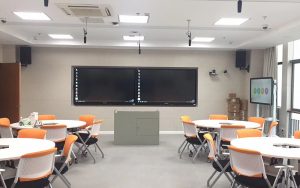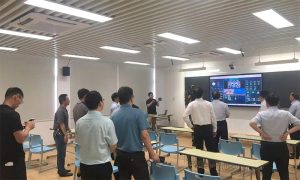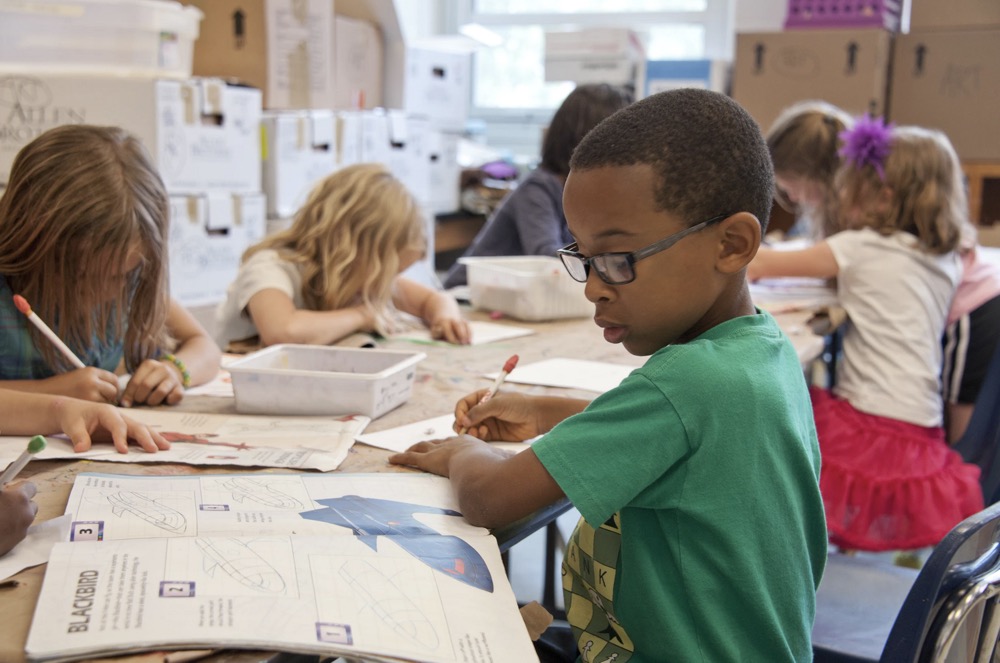
在2018年《应用心理学》学术期刊上刊登了一篇名为《学习绩效与教室照明环境研究述评》的论文,作者是由加拿大滑铁卢大学的研究小组孙宝石(数言CEO)、李宗臣、曹石教授提出“学校中的照明不仅对学生的近视有影响,也会影响学生的学习成绩”。
内容来自《应用心理学》
2018. Vol.24. No.4,291-303
—
文章提出青少年学生处于生理和心理发育期,并且长时间在教室内学习,因此学生所处的教室环境对他们的身心健康和学习效果有着不可忽视的影响。Gilavand (2016) 认为教室是一个特殊的社交空间,健康的环境能够在学生的社会化过程中提高学生的绩效。

最初,研究人员关注自然光和人工照明的区别。Hathaway(1983)发现老师和小学生更喜欢自然光,其后的一些研究则表明自然光更能对学生产生积极影响(Ritner and Robbin,2002; Heschong,2003; Earth-man,2004)。然而 ,教室单纯依靠自然光不现实 ( Higgins et al., 2005 ) , 而且不足或者过度的自然光都会引起学生的抱怨(Singh and Arora,2014)。因此 ,可控的自然光配合适当的人工照明对学习绩效非常重要(John& Timothy,2005)。考虑到自然光的控制在建筑完成后,主要靠玻璃和窗帘,调节的效果非常有限。因此,对人工照明的研究逐渐成为室内照明环境的重点。
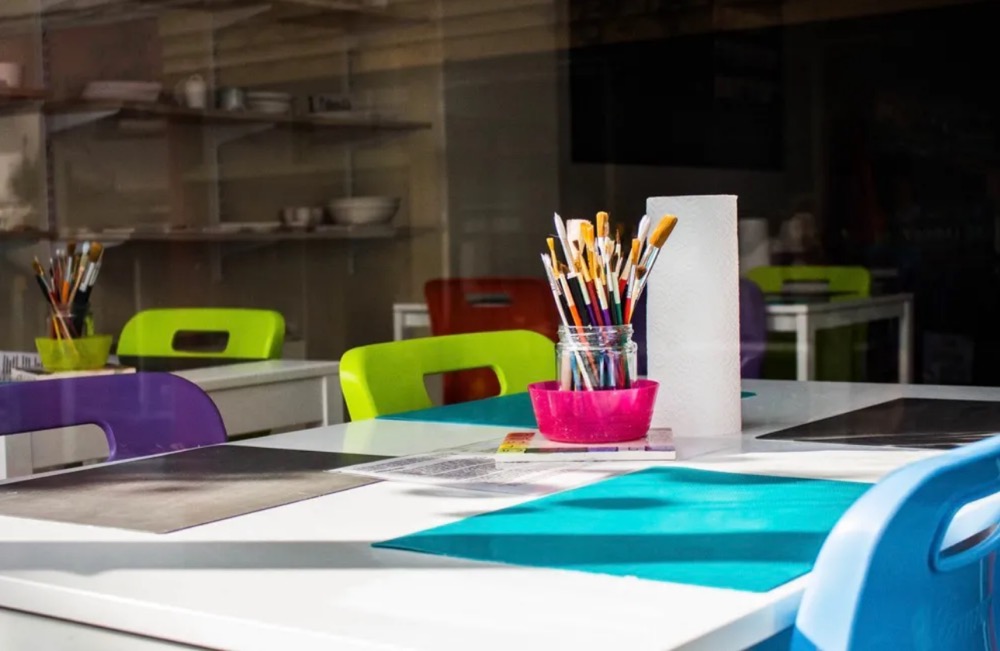
之后越来越多学者开始研究室内照明的亮度,各国也陆续出台了相关标准,例如:美国、英国、中国等国家都规定教室的平均照度不应低于 300lux,且一般要求亮度分布均匀。那么教室里的照明亮度是否越亮越好? 做到亮度均匀分布是否就足够了? 近期研究结果倾向于否定的答案。
虽然一些研究表明高亮度 (如1000lux) 能够提高学生注意力 (Sleegers et al.,2013; Singh and Arora,2014),减少困倦 、增加活力和提高兴奋程度 (Smolders,2014; Fabio et al.,2015),然而 ,Winterbottom (2009)认为过量照明会引发身体不适和眩光失能(Kim and Koga,2005; Osterhaus,2005),因此建议通过窗帘和灯光调节将教室照明亮度控制在1000 lux以内 。Veronika (2015) 通过测量发现高亮度 (5000 lux) 和低亮度 (400 lux) 对受试者的褪黑素变化没有显著影响 ,高亮度与低亮度条件相比反而会降低受试者的绩效。
此外,一项针对英国小学的调研发现交互式智能显示屏已经在教室中广泛安装,在使用显示屏的多数时间里高亮度照明并不是所希望的,老师们更希望使用显示屏时亮度足够低,从而提高显示内容的对比度,而在学生阅读书本时再把亮度提高 (Zhang et al.,2016)。更进一步 ,一些特定教学场景需要调整亮度分布,例如老师授课和学生自习时讲台与学生区的亮度对比需要反转; 幻灯片或投影仪演示时需要减少自然光、关闭屏幕区域的照明,而听众区域需要保持适当的照明; 即兴演讲需要聚光灯效果; 而小组讨论最好能够分区域照明,减少组间干扰。

在此基础上,近年来部分学者开始关注不同教学场景对照明方案的不同需求 。Ayash (2016) 指出,在鲜艳的色彩下学生能取得更高的阅读分数; Wessolowski (2014) 发现照明的丰富变化能够提高小学生的社交行为; 韩国 KAIST大学的两位研究者 (Choi and Suk,2016) 建议在长时间的学习环境中,光线应该有所变化,对于简单、标准和高认知负荷的活动建议分别使用3500K,5000K和6500K色温 ; 而另一个韩国研究团队 (Lee et al.,2016)开发了一个能自适应多种教学场景 (如数学 、艺术 、社交等 )的照明系统,并提出了分别针对这些场景的亮度和色温配置。
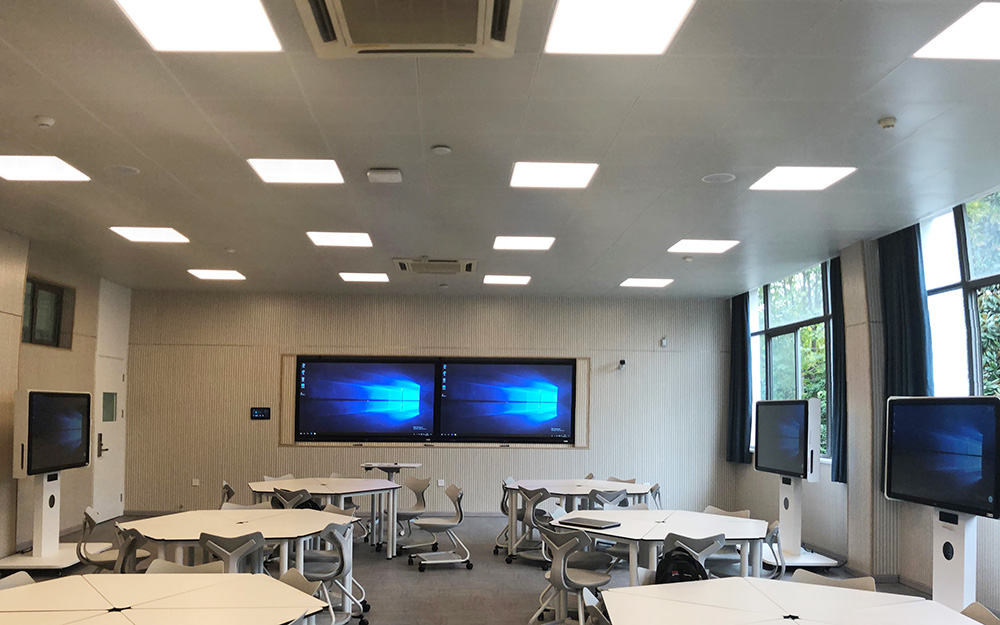
由此得出结论,好的光照一定是根据不同的教学场景,动态调节亮度、色温及光分布,并能持续演进智能照明。保持学生最佳舒适的视觉效果,从而更有效的提高学生学习成绩。
另外一篇由数言公司CEO孙宝石、张巧丽、曹石教授在国际环境研究与公共健康学术期刊上刊登的一篇《基于学习情境的教室自优化智能照明系统的开发与实现》中研究设计并实现了一种能够根据不同的教学场景,动态调节亮度、色温及光分布、并能持续演进的智能照明系统。

内容来自国际期刊
《环境研究与公共健康》
—
文章提出教室环境是一个集成的室内环境系统,包括物理布局,室内设计,基础设施,家具和设备,以及室内环境因素,包括光线,温度,湿度,空气质量和声音。现有研究表明,教室的环境质量会对学生的健康和表现产生重大影响[1–7]。在所有环境因素中,人们认为光起着最重要的作用之一。一项研究表明,与其他六个环境因素相比,教室光环境对于提升学习成绩的贡献率高达21%[8]。

照明是教室环境的重要因素,相关研究表明,照明配置(包括亮度和色温)能够影响学生的学习绩效。虽然LED照明系统能够精确控制亮度和色温,但是现有的教室LED照明控制系统主要关注于节能,缺少能够与教学场景相关联的照明配置能力。本智能照明系统不仅允许人工控制,而且能够与课程表集成,实现自动切换场景。其次,根据现有的研究成果,我们建议了十种照明配置模式,分别对应于教学过程中的各种场景,这些照明配置模式均位于色温与照度曲线(Kruithof’s curve)规定的舒适区间。

在色温与照度曲线中建议的最佳舒适照度区域
4.通过运用知识来优化教室的照明环境,以获得最佳的学生表现来自科学研究;
5.可以收集学生的表现数据等反馈,并不断提高照明配置。
在当前的研究中,我们设计并实施了一种创新的智能照明系统,以便满足这些要求。
 基于学习情景的智能照明系统的结构。
基于学习情景的智能照明系统的结构。
因此,科学的教室照明环境设计不仅可以改善学生视力,更能够提高学生的学习绩效。这一点更值得我们关注!
参考文献
AL-Ayash,A.,Kane,R.T.,Smith,D.,& Gren Armytage,P.(2016). The influence of color on student emotion,heartrate,and performance in learning environments. Color Research & Aplication,41(2),196-205.
Baoshi, Sun.,Qiaoli, Zhang., & Shi, Cao.,(2019).Development and Implementation of a Self-Optimizable Smart Lighting System Based on Learning Context in Classroom.
Choi,K.,& Suk,H.J.(2016). Dynamic lighting system for the learning environment: Performance of elementary students. Optics Express,24(10), A907-A916.
Earthman,G.I.(2004). Prioritization of 31 criteria for school building adequacy. Baltimore,MD: American Civil Liberties Union Foundation of Maryland.
Fabio,B.,Chiara,B.,Ornela,L.R.,Laura,B.,& Simoneta,F.(2015).Non visual efects of light: An overview and an Italian experience. Energy Procedia,78,723-728.
Gilavand,A.,Gilavand,M.,& Gilavand,S. (2016).Investigating the impact of lighting edu- cational spaces on learning and academic achievement of elementary students. International Journal of Pediatrics,4(5),1819-1828.
Hathaway,W.E.(1983). Lights,windows,color: Elements of the schoo lenvironment. In 59th Annual meeting of the Council of Educational Facility Planners(p.28). Alberta,Canada.
Higgins,S.,Hal,E.,Wall,K.,Woolner,P.,& Mc Caughey,C.(2005).The impact of school environments: A literature review. London: Design Council.
Heschong,L.(2003).Windows and classrooms: A study of student performance and the indoor environment. California Energy Commision.
Kim,W .,& Koga,Y.(2005).Glare constant Gw for the evaluation of discomfort glarefrom windows. Solar Energy,78(1),105-111.
Lee,H.S.,Kwon,S.Y.,& Lim,J.H.(2016). A development of a lighting control system based on context-awareness for the improvement of learning efficiency in clasrom. Wireles Personal Communications,86(1),165-181.
Osterhaus,W.K.(2005). Discomfort glare asessment and prevention for daylight applications in ofice environments. SolarEnergy,79(2),140- 158.
Rittner,H.,& Robbin,M.(2002).Color and light inlearning. School Planning & Management,41 (2),57-58.
Sleegers,P.J.C.,Molenar,N.M.,Galetzka,M., Pruyn,A.,Saroukh,B.E.,& VanderZande,B. (2013).Lighting afects students’ concentration positively: Findings from thre Dutch studies. Lighting research & technology,45(2),159-175.
Singh,M.P.,& Arora,R.(2014). Clasroom Illuminance: Its impact on Students’ Health Exposure & Concentration Performance. In UserCentered Design and Ocupational Welbeing-Procedings of International Ergonomics Conference HWWE2014. McGraw Hill Education ( Prof) ( pp . 704 – 708 ) .
Smolders,K.C.,& de Kort,Y.A. (2014). Bright light and mental fatigue: Effects on alertness,vitality,performance and physiological arousal. Journal of Environmental Psychology,39,77 – 91.
Veronika,L.,Maria,M.R.,Viktoria,S.,Angelika, H.L.,Gerald,M.,& Christian,B.,etal. (2015). Intense ilumination in the morning hours improved mood and alertness but not mental performance. ApliedErgonomics,46,54-59.
Winterbottom,M.,& Wilkins,A.(2009).Lighting and discomfort in the clasroom. Journal of Environmental Psychology,29,63-75.
Wessolowski,N.,Koenig,H.,Schulte-Markwort, M.,& Barkmann,C.(2014).The efect of variable light on the fidgetiness and social behavior of pupils in school. Journal of Environmental P sychology,39,101-108.
Zhang,Y.,Baret,P.,Davies,F.,& Baret,L. (2016).A field survey on the indoor environmental quality of the UK primary school clasrom. British Journal of School Nursing,11(10),492- 496.
黄 海 静 .(2010).大 学 教 室 照 明 中 的 光 生 物 效 应 研 究 .Doctoraldis sertation,重 庆 大 学 .
孙宝石, 曹石, & 李宗臣. (2018). 学习绩效与教室照明环境研究述评. 应用心理学, 24(4), 291-303.
1. Earthman, G.I. Prioritization of 31 Criteria for School Building Adequacy; American Civil Liberties Union Foundation of Maryland: Baltimore, MD, USA, 2004.
2. Higgins, S.; Hall, E.; Wall, K.; Woolner, P.; McCaughey, C. The Impact of School Environments: A Literature Review; Design Council: London, UK, 2005.
3. Blackmore, J.; Bateman, D.; Loughlin, J.; O’Mara, J.; Aranda, G. Research into Learning Spaces and between Built the Connection Student Outcomes; Education Policy and Research Division Department of Education and Early Childhood Development: Melbourne, Australia, 2011.
4. Yang, Z.; Becerik-Gerber, B.; Mino, L. A study on student perceptions of higher education classrooms: Impact of classroom attributes on student satisfaction and performance. Build. Environ. 2013, 70, 171–188. [CrossRef]
5. Gilavand, A.; Jamshidnezhad, A. Investigating the Impact of Educational Spaces Painted on Learning and Educational Achievement of Elementary Students in Ahvaz, Southwest of Iran. Int. J. Pediatr. 2016, 4,1387–1396.
6. Zhang, Y.; Barrett, P.; Davies, F.; Barrett, L. A field survey on the indoor environmental quality of the UK primary school classroom. Br. J. Sch. Nurs. 2016, 11, 492–496. [CrossRef]
7. Ministry of Education. Gabrielle Wall The Impact of Physical Design on Student Outcomes; Ministry of Education: Wellington, New Zealand, 2016.
8. Barrett, P.; Davies, F.; Zhang, Y.; Barrett, L. The impact of classroom design on pupils’ learning: Final results of a holistic, multi-level analysis. Build. Environ. 2015, 89, 118–133. [CrossRef]

